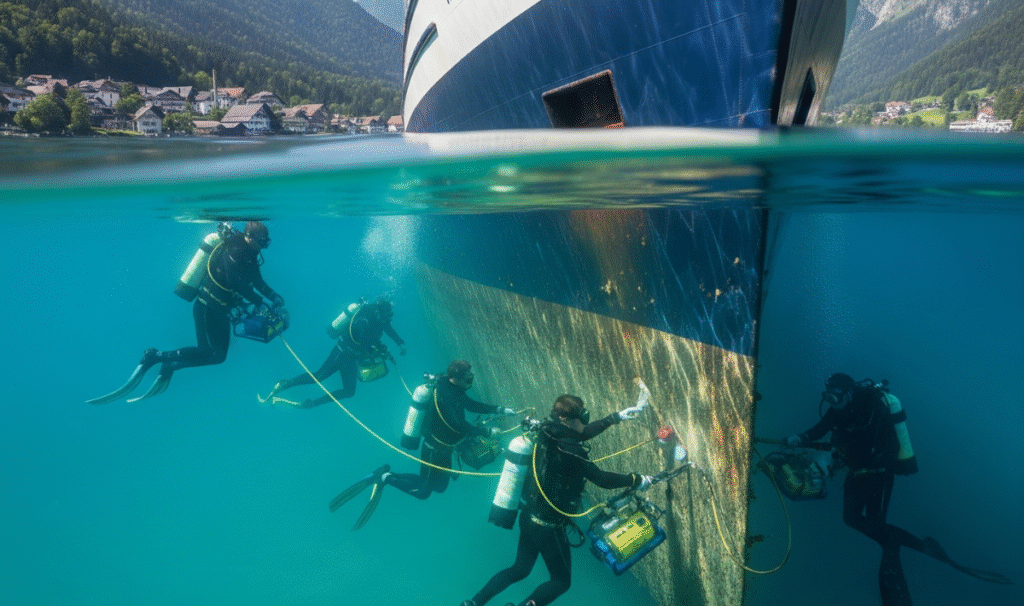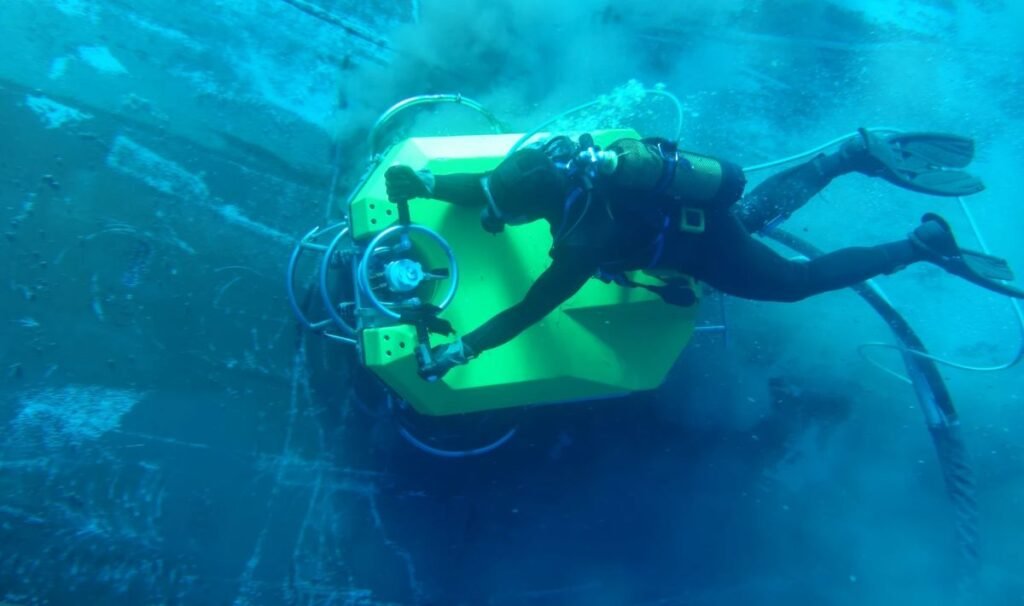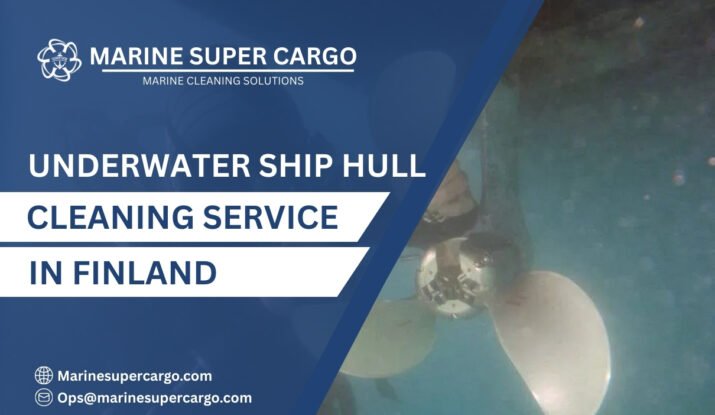Picture yourself sailing through Finland’s labyrinth of sparkling archipelagos and icy blue fjords. The ship glides effortlessly—until, unseen beneath the waves, stubborn clusters of barnacles, algae, and mussels begin to gather. These tiny hitchhikers aren’t just passengers; left unchecked, they slow your journey, waste fuel, and threaten the pristine ecosystem you’re traveling through. That’s why underwater ship hull cleaning in Finland is more than a routine—it’s your best defense for clean, efficient, and eco-responsible sailing.
Why Ship Hulls Need Cleaning: Going Beneath the Surface
Ships, like adventurers in the Nordic wild, face relentless elements every single day. From Helsinki to Turku, Finland’s brisk waters are fertile ground not just for memories, but for marine growth. Cleaning a ship’s hull underwater is like giving it a breath of fresh air—a new lease on life beneath the surface.
Understanding Biofouling: The Hidden Threat
How Biofouling Impacts Performance
Imagine trying to run a sprint in shoes coated with sticky mud. That’s what biofouling does to ships. As organisms grip onto the hull, ships need more power to keep the same speed, and fuel consumption can soar by up to 40%. Over time, this silent drag increases emissions and hits your wallet hard. In Finland’s competitive shipping industry, every bit of efficiency matters.

Environmental Implications in Finnish Waters
Finland is home to some of Europe’s cleanest seas, and people here cherish the natural world. But if hull cleaning isn’t handled correctly, it can unleash invasive species or toxic paint into the water. That’s why underwater ship hull cleaning in Finland is performed with ecological care, aligning with the highest environmental standards. The MARPOL Convention, described by experts at Marine Insight, warns against careless removal of hull debris, urging strict pollution controls.
Overview of Underwater Ship Hull Cleaning in Finland
Popular Finnish Ports and Their Unique Challenges
Finland’s major shipping centers—Helsinki, Turku, Kotka, and beyond—see a non-stop stream of cargo and cruise ships. Each port has its quirks: Helsinki’s bustling docks, Turku’s freezing winters, and Kotka’s strong Baltic currents. Navigating these differences takes local know-how and, often, clever scheduling.
Seasonal Considerations for Underwater Ship Hull Cleaning in Finland
Finnish waters are famous for their transformations—from lively, sunlit summers to icy, challenging winters. In the warmer months, biofouling can thrive; in winter, cold waters and ice sheets change the cleaning game. Underwater ship hull cleaning in Finland adapts to each season, with methods and timing as flexible as the Finnish weather.
Techniques Used for Underwater Ship Hull Cleaning in Finland
Diver-Based Approaches
There’s a certain romance to the image: brave divers slipping into the chill beneath a ship, armed with rotary brushes and powerful jets. In Finland, many hull cleaning jobs still require the skilled touch only a human can provide. Divers use hand tools, water-blasting wands, and even underwater vacuums. Safety is paramount, so companies follow best practices set out by organizations like IMCA (International Marine Contractors Association).
Robotic and Automated Solutions
The future is knocking on Finland’s hulls! Robots and remotely operated vehicles (ROVs) are changing the game. These underwater robots cling to hulls and scour away biofouling with brushes or water jets, controlled from the comfort—and warmth—of the ship. They work fast, document every inch, and keep divers out of harm’s way.
Eco-Friendly Cleaning Technologies
Modern cleaning isn’t just about scraping; it’s about protecting our planet. Finnish operations now employ everything from bio-friendly gel solutions (which dislodge fouling without polluting) to cavitation water jets that blast away grime without stripping vital anti-fouling paint. According to the International Maritime Organization (IMO) and recent best practices, filtration and recovery systems are essential after cleaning, ensuring nothing harmful slips into the sea.
Advantages of Regular Underwater Ship Hull Cleaning in Finland
Fuel Savings and Efficiency
Regular hull cleaning can feel like trading in a heavy coat for a sleek windbreaker—you just move better! Ships can save thousands of euros per voyage. Less drag means less fuel burned, fewer emissions, and more reliable schedules.
Challenges and Solutions in the Finnish Context
Cold Water Operations and Ice Conditions
Let’s not mince words: cleaning ships in an icy Helsinki winter is no walk in the park. Cold temperatures can slow down both people and machines. The trick? Extra insulation for divers, using heated ROVs, or timing cleaning sessions during milder spells. Many Finnish cleaning teams have even designed custom equipment built to resist freezing conditions.
Regulatory and Logistical Hurdles
Finland’s best shipping partners stay up to date on rules from IMO, the European Union, and the Finnish government. Navigating permits and local eco-protection laws is part of the job. But with a good cleanup partner, you can breeze through the paperwork—and the waters.
Choosing the Right Partner for Underwater Ship Hull Cleaning in Finland
What to Look For: Certification and Best Practices
When it’s your ship, you don’t leave things to chance. Here’s what sets quality apart:
- Certified divers and technicians (IMCA standards)
- Advanced robotic and eco-friendly cleaning systems
- Strict compliance with IMO and MARPOL guidelines
- Local experience in Finnish ports and conditions
Doing your homework now means smoother voyages later.

The Future of Underwater Ship Hull Cleaning in Finland
Innovations and Environmental Commitments
You can expect even greener, smarter hull cleaning in the coming years. Finland is at the forefront of pioneering eco-safe cleaning gels, ultra-efficient waterproof robots, and real-time cleaning analysis. As new regulations arise and tech improves, operations will only become safer and more sustainable.
Conclusion
Whether you’re running a bustling ferry between Helsinki and Tallinn or guiding a fleet through the Baltic, one thing remains true: Underwater ship hull cleaning in Finland is your invisible anchor for success. By keeping hulls spotless, you cut costs, save fuel, protect precious nature, and stay on the right side of evolving laws. With the world turning ever greener, your spotless hull is more than clean metal—it’s a commitment to a cleaner tomorrow for Finland and beyond.
FAQ:
Q1. How often should underwater ship hull cleaning in Finland be carried out?
Frequency depends on sailing routes and seasons, but most vessels benefit from quarterly or biannual cleaning to prevent biofouling build-up in Finland’s diverse conditions.
Q2. Does hull cleaning damage the vessel’s paint or ecosystem?
Not when performed using modern, eco-friendly methods and certified teams. Finnish standards require filtered debris recovery and minimal abrasion to anti-fouling coatings.
Q3. Is robotic cleaning effective in Finland during winter?
Yes, but the choice of equipment matters. Heated and insulated ROVs or robots are used to handle cold and ice, keeping cleaning consistent year-round.
Q4. Who regulates underwater Ship hull cleaning in Finland?
Local port authorities follow IMO and MARPOL rules. The Finnish government also sets strict national regulations, all designed to protect the Baltic’s unique ecosystem.
Q5. What’s the main benefit of regular underwater ship hull cleaning in Finland?
You gain better fuel efficiency, lower emissions, compliance with global standards, and play a direct role in protecting Finland’s marine environment—plus, your ship sails faster and smoother.


